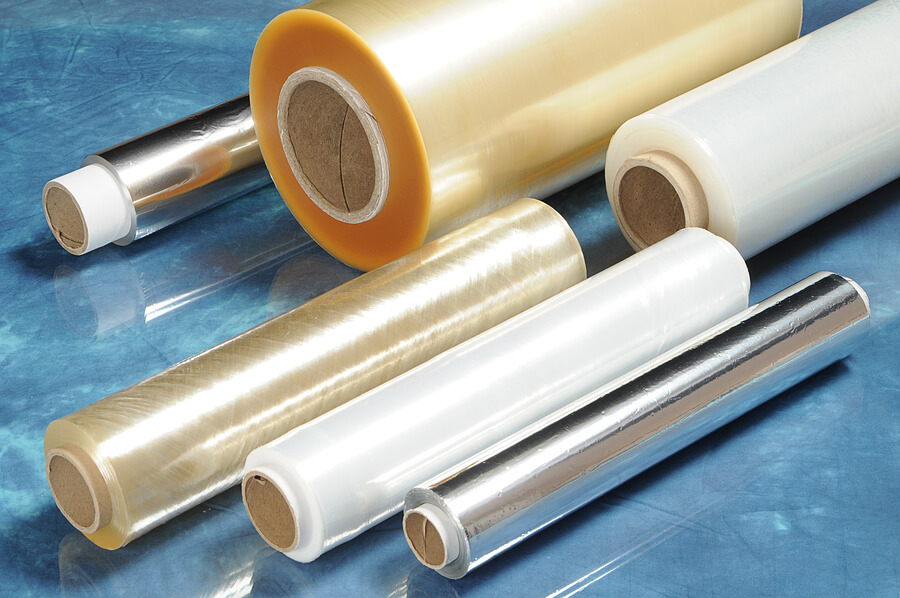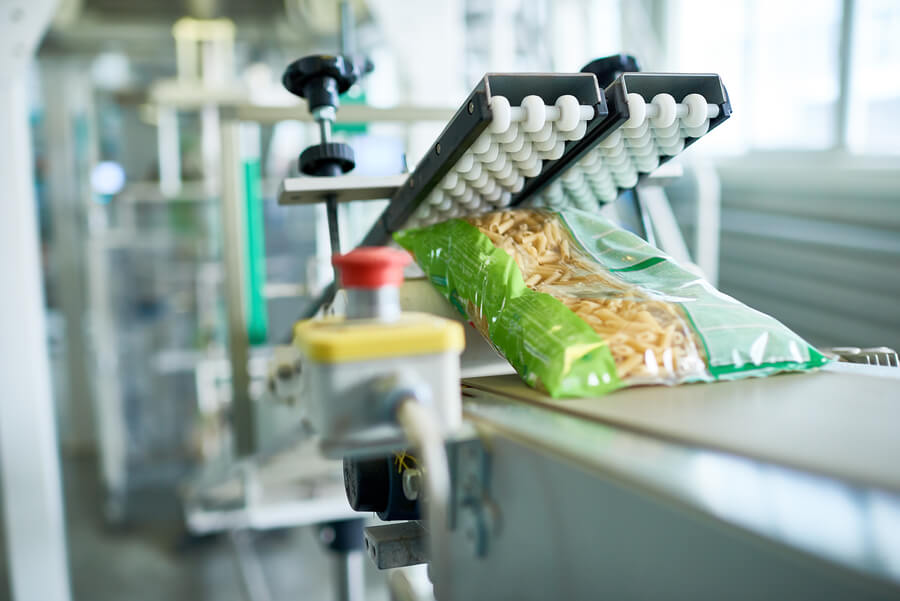Table of Contents
Is Food Packaging Really Safe? The New Study That Researchers Want You to Know
It's no secret that food packaging is an integral part of our everyday lives. From the cookies you enjoy during snack time, to the pre-packaged salads you grab for a quick lunch, packaging plays an essential role in preserving the freshness, quality, and safety of our food. But in the midst of these benefits, an important question arises – is food packaging really safe?
Recent studies have sparked concern over the safety of some food packaging materials and the potential risks they pose to our health. In this comprehensive guide, we'll dive deep into the heart of this issue, examining a new study that has made waves in the research community and has shed fresh light on the safety of food packaging.
Understanding Food Packaging
Food packaging serves a multi-faceted purpose. Not only does it protect food from contamination, but it also extends the shelf life, facilitates transportation, and even provides vital nutritional information. The wide array of packaging materials ranges from glass, metal, and paper, to plastic and biodegradable substances. While all are designed with food safety in mind, their safety standards are contingent on their chemical components and the conditions under which they're used.

The Role of Food Packaging in Safety
Food packaging is crucial in safeguarding our food from a myriad of potential hazards. Its role in maintaining the safety and integrity of food can be comprehensively detailed under the following points:
Physical Protection
The fundamental role of food packaging is to serve as a physical barrier. It shields the food from external influences and potential damage, including exposure to air, light, moisture, and heat. The packaging ensures that the food remains safe and uncontaminated from the point of production to when it arrives in the hands of the consumer.
Preventing Contamination and Spoilage
Quality food packaging plays a pivotal role in preventing microbial contamination and spoilage. It creates a sealed environment, thereby barring the entry of pathogens, pests, and other contaminants that could lead to foodborne diseases. A well-sealed package can drastically extend the shelf-life of food products, ensuring they stay fresh for a longer period.
Chemical and Microbiological Safety
Beyond providing a physical barrier, food packaging significantly contributes to the chemical and microbiological safety of our food. Certain types of packaging materials, for instance, contain antimicrobial agents that actively inhibit the growth of bacteria or fungi. By curbing the proliferation of these microorganisms, the food stays safe, fresh, and palatable for longer.
Informational Role
Packaging isn't just about protecting the food inside; it also serves as an information channel between the manufacturer and the consumer. It provides vital data such as ingredient lists, nutritional information, and allergen warnings. This information is critical for consumers, especially those with specific dietary needs or allergies, to make safe and informed food choices.
Controlling Portion Sizes
Another key role of food packaging is in portion control. By packaging food into individual or family-sized portions, consumers can easily monitor their intake, which can contribute to maintaining a balanced diet and healthy lifestyle.
Ensuring Convenience
Lastly, food packaging plays a significant role in consumer convenience. Easy-open cans, resealable packages, and microwave-safe containers are all examples of how packaging is designed with the consumer's ease and safety in mind.
The Concerns Around Food Packaging Safety
While food packaging provides crucial benefits in protecting and preserving our food, there's a rising tide of concerns related to the potential negative impacts on human health. This unease is primarily focused on the potential for certain chemicals used in food packaging, particularly plastics, to infiltrate our food. Below, we delve deeper into these apprehensions:
Chemical Migration from Packaging to Food
One of the central concerns around food packaging safety revolves around the potential migration of chemicals from packaging materials into the food products they house. This can occur when food comes into contact with the packaging over time, or when the packaged food is heated. Once these chemicals enter our food, they can be consumed, possibly posing health risks.
Bisphenol A (BPA)
BPA is a chemical compound commonly used in the production of polycarbonate plastics and epoxy resins, which are often used in food and drink packaging. The concern with BPA is that it is an endocrine disruptor – meaning it can interfere with our body's hormonal system. Exposure to BPA may be associated with a range of adverse health effects, including reproductive disorders, heart disease, and developmental problems in children.
Phthalates
Phthalates, another group of chemicals used in food packaging, particularly in flexible plastics, have also come under scrutiny. Similar to BPA, phthalates are known endocrine disruptors. There's mounting evidence suggesting a link between phthalates exposure and an array of health concerns, such as reproductive abnormalities, endocrine-related cancers, and even behavioral issues in children.
Perfluoroalkyl Substances (PFAS)
PFAS are a group of man-made chemicals used in a variety of industries worldwide, including in the production of food packaging for their water and grease-resistant properties. However, their potential to leach into food, combined with their persistence in the human body and the environment, raises serious concerns. Research has linked PFAS exposure to several health issues, such as hormone disruption, immune system effects, increased risk of certain cancers, and potential effects on fetal development.
Potential for Cumulative Effects
Adding to these concerns is the potential for cumulative effects of these chemicals. We're often exposed to low levels of multiple chemicals at once, and little is known about how these chemicals might interact with each other or accumulate over time. This uncertainty contributes to the overall concerns about the safety of food packaging.

The Groundbreaking Study
Given the growing concerns about the potential health impacts of chemicals in food packaging, a landmark study was recently carried out. This study was dedicated to critically evaluating the safety implications of food packaging materials, with a focus on long-term exposure to some controversial chemicals. Here, we break down the pivotal components of this game-changing research:
Focus of the Study
This breakthrough study aimed to assess the impact of long-term exposure to low concentrations of specific chemicals found in food packaging – namely BPA, phthalates, and PFAS. The significance of this research lies in the fact that these are substances that the average person is exposed to every day through the food they consume.
Publication and Recognition
The study, a result of rigorous research and meticulous methodology, was recognized by the scientific community and earned its publication in a leading scientific journal. This recognition underscores the study's relevance, credibility, and potential implications for the field of food safety.
Study Design
What sets this study apart from previous research is its scale and scope. The study was extensive in terms of both the duration of the investigation and the sample size. The researchers tracked the participants' exposure to these chemicals over a span of several years, making it one of the most comprehensive longitudinal studies in this field to date.
Health Checks and Monitoring
Integral to this research were the periodic health checks conducted on the participants. These regular health assessments aimed to identify any potential adverse effects that could be associated with long-term exposure to these chemicals.
Findings
The findings of this study shed new light on the potential risks of chronic exposure to these chemicals commonly found in food packaging. The study didn't just look for immediate or short-term effects but also tracked the participants' health over several years to capture the potential long-term health implications.
Steps to Ensure Your Food Packaging is Safe
Given the revelations of the aforementioned study, it's natural to question what proactive steps you can take to ensure your food packaging is safe. Here's a more comprehensive and detailed set of recommendations:
Reduce Plastic Usage
While it might seem daunting to completely eliminate plastic from your life, it's certainly feasible and beneficial to limit its use, especially in relation to food storage. An actionable step is to minimize the amount of food you store or heat in plastic containers. Whenever possible, opt for glass or stainless steel containers which are generally considered safer and are more sustainable alternatives.
Exercise Caution with Microwaving
Microwaving food in plastic containers can elevate the risk of chemicals leaching into your food due to the heat. It's recommended to transfer food into microwave-safe glass or ceramic dishes before heating to minimize this risk.
Opt for BPA-Free Products
With growing consumer awareness, many companies are now offering BPA-free products. While this is a positive move, it's important to note that BPA-free doesn't necessarily mean the product is free from all potentially harmful chemicals. However, choosing BPA-free products is a step towards reducing your exposure to known harmful substances.
Stay Abreast of Latest Research
Keeping yourself updated with the most recent research on food packaging safety is crucial. As consumers, our demands and choices can influence manufacturers and spur changes in legislation. By being informed, you can make safer choices and advocate for more stringent safety regulations.
Be a Conscious Consumer
Remember that every purchase is a vote. By supporting companies that prioritize safe and sustainable packaging, you contribute to a broader shift in the market. Always scrutinize product labels and prefer those with clear, transparent information about their packaging materials.
Prioritize Fresh, Unpackaged Food
Whenever possible, prioritize buying fresh, unpackaged food. Not only does this reduce potential exposure to chemicals from packaging, but it also often means a healthier diet, filled with fruits, vegetables, and whole foods.

Insight into the Regulatory Framework Governing Food Packaging
The regulatory landscape that supervises food packaging safety is an intricate web of laws and guidelines at multiple levels, both nationally and internationally. Here's a more detailed breakdown of this regulatory framework and the challenges it faces:
National Regulatory Bodies
In the United States, for example, the Food and Drug Administration (FDA) is the chief regulatory body tasked with ensuring the safety of food contact materials. The FDA's role includes establishing safety standards, conducting regular inspections, and enforcing compliance with these standards.
International Regulatory Framework
Beyond national boundaries, there are also international regulations and guidelines that influence food packaging safety. These include standards set by organizations like the World Health Organization (WHO) and the Food and Agriculture Organization (FAO), which are adopted by many countries around the world to ensure the safety of their food supply.
The Complexity of Food Packaging Materials
Food packaging materials can be incredibly complex, often comprising a vast array of different chemicals. Each of these components may have different safety implications, making the regulatory task incredibly challenging. Effectively monitoring and enforcing safety regulations for such diverse materials is a demanding and intricate endeavor.
Enforcement Challenges
Given the complexity and variety of food packaging materials, enforcing the established safety standards can pose significant challenges. Regulatory bodies must be able to identify potentially harmful substances, track their use in food packaging, and assess the risks they pose. This requires extensive scientific expertise and resources, as well as effective mechanisms for tracking and enforcement.
Calls for Improved Regulatory Systems
In light of these challenges and the evolving scientific understanding of the risks associated with certain packaging materials, there are growing calls for a more robust and adaptable regulatory system. Such a system should be capable of keeping pace with the latest scientific research, swiftly incorporating new findings into regulatory standards, and effectively protecting public health.
Role of Consumer Advocacy
Consumer advocacy also plays an essential role in shaping and pushing for improvements in regulatory frameworks. By staying informed about the latest research and pushing for safer practices, consumers can drive demand for stricter regulations and safer products.

Overview of The Future of Food Packaging
Given the mounting apprehensions surrounding conventional food packaging, many researchers and companies are refocusing their efforts on developing safer, more sustainable options. From consumable packaging to decomposable materials, the future of food packaging promises to be vastly divergent from what we know today. Below, we delve into some promising trends and the impetus behind them:
Emerging Packaging Innovations
In the realm of scientific innovation, several new packaging alternatives are being explored to mitigate the risks associated with traditional food packaging. Concepts such as edible packaging made from food-grade materials or biodegradable packaging that decomposes naturally over time are gaining traction. These innovative solutions aim to not only address food safety concerns but also mitigate the environmental impact of food packaging.
Increased Investment in Research and Development
In tandem with these innovative trends, there is a noticeable increase in the investment allocated toward research and development in food packaging safety and sustainability. This surge in funding underscores the industry's recognition of the need for change and its commitment to spearheading that change through scientific discovery and technological advancement.
Consumer Demand for Greener, Healthier Packaging
Increasingly, consumers are becoming more conscious about the health and environmental implications of their food packaging choices. Demand for greener, healthier packaging options is on the rise, pushing companies to explore and invest in alternatives to traditional packaging materials.
Shifting Industry Trends
As we gaze into the future, it's clear that the food packaging industry is on the brink of substantial change. This shift is driven not just by scientific advancements and regulatory pressure, but also by changing consumer preferences and increasing societal awareness about the health and environmental implications of food packaging.
Greater Transparency
Another potential future trend in food packaging is increased transparency. Consumers are demanding more information about the safety and environmental impact of their food packaging. This may lead to more transparent labeling practices and more accessible information about the materials used in food packaging.
The Impact of Food Packaging on the Environment
While this discussion has predominantly revolved around the potential health ramifications of food packaging, the environmental consequences of these materials are equally crucial to consider. Particularly, certain food packaging materials, most notably plastics, bear a significant environmental burden. Here's a detailed look at how food packaging impacts our environment:
- Contribution to Pollution: Food packaging materials, especially those made from non-biodegradable plastics, contribute significantly to environmental pollution. This pollution isn't confined to landfills alone. Packaging waste often finds its way into our oceans, rivers, and other natural ecosystems, leading to wide-reaching environmental harm.
- Slow Degradation Rates: Many food packaging materials degrade at a painfully slow rate. Plastic packaging, for instance, can take hundreds of years to break down completely. This slow degradation further exacerbates the pollution problem and has long-term impacts on the health of our planet.
- Threat to Wildlife: Packaging materials, particularly when improperly disposed of, pose a significant threat to wildlife. Animals can ingest these materials or become entangled in them, leading to injury or death. Moreover, chemicals from the packaging can leach into water sources, potentially impacting aquatic life.
- Resource Use and Emissions: The production of food packaging materials also carries an environmental cost. It often involves the use of finite natural resources and the emission of greenhouse gases, contributing to climate change.
Given these environmental implications, the move towards safer food packaging extends beyond just protecting human health—it's also about mitigating our environmental footprint. By selecting packaging options that are not only safe for us but also gentler on the environment, we can contribute to a healthier, more sustainable future:
- Choosing Sustainable Packaging: Opt for food packaging that is made from renewable or recycled materials, and can be composted or recycled after use.
- Reducing Packaging Waste: Whenever possible, choose products with minimal packaging, or buy in bulk to reduce the amount of packaging waste.
- Disposing of Packaging Responsibly: Ensure packaging is disposed of correctly. Recycle or compost packaging materials where possible, and never litter.
Conclusion
Food packaging, while providing essential protective functions, has also raised concerns about its safety due to potential chemical exposure. As consumers, staying informed about these issues and making conscious choices can help limit our exposure to potentially harmful substances.
New research will undoubtedly continue to shed light on this complex issue, but for now, the best advice is to remain cautious and make informed choices about the food packaging we use.
Sources:
- https://www.theguardian.com/us-news/2020/feb/18/are-plastic-containers-safe-to-use-food-experts
- https://www.envirotech-online.com/news/water-wastewater/9/breaking-news/is-plastic-food-packaging-safe/58825
- https://www.sciencedirect.com/science/article/pii/S1319562X21003090
- https://ift.onlinelibrary.wiley.com/doi/full/10.1111/1541-4337.13001




Comments
Loading…